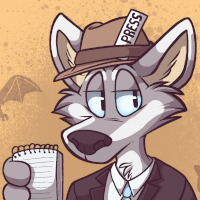Ka: Dar Oakley in the Ruin of Ymr, by John Crowley – Book Review by Fred Patten
by Pup Matthias
Submitted by Fred Patten, Furry’s favorite historian and reviewer.
 Ka: Dar Oakley in the Ruin of Ymr, by John Crowley. Illustrated by Melody Newcomb.
Ka: Dar Oakley in the Ruin of Ymr, by John Crowley. Illustrated by Melody Newcomb.
NYC, Saga Press, October 2017, hardcover $28.99 ([4 +] 442 [+2] pages), trade paperback $16.99, Kindle $7.99.
This is the story of Dar Oakley, “the first Crow in all of history with a name of his own” (blurb). It is told by a nameless human narrator in the time of death, when both humans and Crows are all dying. The narrator’s wife Debra has just died, and he is sick, delirious, and alone in his country house. He finds a sick, obviously dying Crow in his back yard:
“I approached it warily – those bills are sharp – and heard from several directions the calling of other Crows, so close I thought I ought to be able to see them, though I couldn’t. The sick one made no attempt to get away, and didn’t even watch me come closer. Or so I thought then. It would take me a long time to understand that Crows, courting or walking a field together, never turning heir heads to observe one another, aren’t indifferent to or unconscious of their neighbors. No. A Crow’s eyes are set far apart, far enough apart that he can best see very close things out of only one eye. Crows beside one another are, in their way, face-to-face.” (p. 4)
The narrator brings the dying Crow into his house on a shovel. But the Crow does not die, nor does the narrator. During the next two years the Crow and the narrator, always alone, both get well, and the narrator learn to talk to the Crow. The Crow, Dar Oakley, tells him his life story. All two thousand years of it:
“He tells me now that he can’t remember much at all of the worst days of his sickness, and the story that I tell – the backyard, the Crows, the shovel, the bathtub – will have to do for him as well as for me. The one thing he knew and I didn’t was that he wouldn’t die. That would take more than a bout of West Nile, if that’s what this was.” (p. 6)
Ka pages 13 to 442 are Dar Oakley’s story. It starts long before the days of Julius Caesar, in the lands of the Celts in northern Europe. One day the Crow who would become Dar Oakley was boasting to a wandering Vagrant Crow:
“‘You’d probably not believe me,’ Dar Oakley said one day to the Vagrant, ‘if I told you how far from here I’ve been.’
The Vagrant, poking in the mud of a pond’s edge for larvae or Frog’s eggs or whatever else might turn up, said nothing in response.
‘I’ve been where there are no Crows at all,’ Dar Oakley said. ‘None anywhere but me.’
‘No such place,’ the Vagrant averred,
‘Oh no?’ said Dar Oakley. ‘Go as far as I have,’
The Vagrant stopped his hunting. ‘Listen, fledgling.’ He said, in a low but not soft voice. ‘Long ago I left the places where I grew up. I was run out. Never mind why. Always between then and now I’ve been on the wing.’” (p. 17)



 Arcana: A Tarot Anthology, Madison Scott-Clary, ed. Illustrated by Joseph Chou.
Arcana: A Tarot Anthology, Madison Scott-Clary, ed. Illustrated by Joseph Chou. Myre: Chronicles of Yria, volume 1, by Claudya Schmidt and Matt W. Davis
Myre: Chronicles of Yria, volume 1, by Claudya Schmidt and Matt W. Davis Project Anthro, by Dallin Newell
Project Anthro, by Dallin Newell Jack Wolfgang. T.1, l’Entrée du Loup, by Stephen Desberg (story) and Henri Reculé.
Jack Wolfgang. T.1, l’Entrée du Loup, by Stephen Desberg (story) and Henri Reculé.
 Furries Among Us 2: More Essays on Furries by Furries, edited by Thurston Howl. Introduction by Thurston Howl. Illustrated by Sabretoothed Ermine.
Furries Among Us 2: More Essays on Furries by Furries, edited by Thurston Howl. Introduction by Thurston Howl. Illustrated by Sabretoothed Ermine. Danger Money, by John Van Stry
Danger Money, by John Van Stry Guess how many furries there are in the world? I’d say at least the population of a medium-to-large city. That’s a lot of members to remember for the holidays. Santa Claws couldn’t deliver all the plushies and bones you need with just one trip on Christmas Eve. Of course instead of Christmas dinner, some of you might be having lox or falafel (or
Guess how many furries there are in the world? I’d say at least the population of a medium-to-large city. That’s a lot of members to remember for the holidays. Santa Claws couldn’t deliver all the plushies and bones you need with just one trip on Christmas Eve. Of course instead of Christmas dinner, some of you might be having lox or falafel (or 